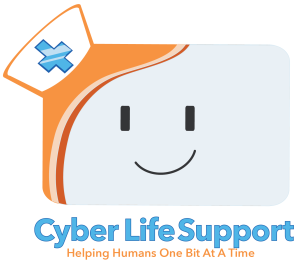Our previous article introduced you to the various tools available for securing your systems and data. This article will hopefully do the same for what actions you can take to effectively reduce your risk of having your information compromised.
With just a bit of good luck and the advice of this article you should be almost completely safe from the majority of hacks and exploits to get your data.
So let’s start with some good habits! An easy one: Don’t plug in random USB drives you find on the street. Most of the time it’s just a dropped drive that fell out of someone’s pocket, but sometimes it has a program that executes automatically and infects your computer.
Really that’s just part of a larger general rule that applies to both physical media and digital information. Don’t accept it from an untrusted source.
To get into that with slightly more detail, every bit or byte of data you let into your computer is doing something, usually exactly what you want it to be doing, but if you’re getting the data from someone or somewhere you don’t completely trust then that transferred information might be doing anything.
Another simple habit to keep your data safe: Use multiple passwords to protect different stuff. Lots of things require you to have a password, but you don’t want to use the same one for everything. If you’re using only one password then if anyone breaches any one of them they’re all compromised, so you’re going to want to have a few. 3-5 split up between different levels of importance is usually going to be a good level of precaution.
Keep your programs and Operating System up to date. People are working constantly to find and fix security holes in just about every program you use, almost every update is going to address one or more of them. Being out of date usually means more security weaknesses are available to be exploited, and even in the few cases where the update has worse overall security it’s usually still better because no-one has been trying to break into it yet.
With these three habits, and a little bit of caution, you’re going to be keeping the vast majority of cyberattacks from getting anywhere, and the few that do won’t be able to cause nearly as much harm.
There are a few more easy things you can do to keep your stuff safe, though they are a touch more involved. So let’s look at them in that context.
Take advantage of any Two Factor Authentication (often abbreviated 2FA) you’re offered. Every extra layer of protection on your accounts and files is good, and this one isn’t hard. You can often have 2FA sent to your phone as a text, your email, or from/to a specialized application or object.
Run a security scan manually every month or so. This should be fairly easy on most every system, since approximately all of the security programs I know of have the ability to just push a big button to get a full sweep of the system for anything maliciously lurking. Just go to your security program, click the big “Scan” button, and then wait the hour or two it might take to check it all.
(If you don’t have one that can run a scan that’s okay, Avast and Bitdefender both have free versions.)
Remove any voice activated smart devices like the Amazon Alexa from your home network. While some have the option to limit their voice processing to the local hardware, others are actively recording and sending those recordings to data centers at which it’s unclear who’s capable of accessing them. Part of why this one is being brought up is we’ve seen some notices going around that several of them either have recently or are soon going to be changing their policy on voice processing to send all recordings back to their data and processing centers.
Of course there’s also a lot more you could do to make everything even safer, and we’re going to be covering options for that in our next articles! From using a less common OS like Linux so you simply aren’t being targeted, to using a VPN to avoid outside notice, and even covering the details of encryption and how to best use it.
